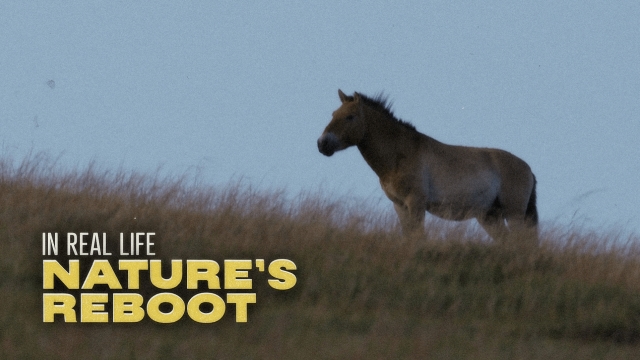Humans have now altered virtually every ecosystem on the planet, fueling extinction rates tens to hundreds of times higher than any point in the last 10 million years. It’s a crisis of such epic proportions that some conservationists are now calling for unprecedented interventions: tapping into our newfound power to shape genomes as a way to save endangered species and even bring back the ones we’ve lost.
“This field is wrestling with this question of how much do we intervene? How fast? Who decides?” said Ryan Phelan, co-founder and executive director of the wildlife conservation organization Revive & Restore. “This is new science that we're pioneering."
Revive & Restore has partnered with the San Diego Zoo Wildlife Alliance and ViaGen Pets & Equine to clone a critically endangered Przewalski's horse, the last truly wild horse species on the planet. The goal is to fight back against what conservationists call “the extinction vortex”. Once a population of animals is small enough, inbreeding and a lack of genetic diversity can accelerate that population loss, putting the species on an irreversible path to extinction. But cloning has allowed scientists to produce a Przewalski's stallion from lost genes—in this case, from four decades ago—creating entirely new bloodlines and returning much-needed genetic variety to the herd.
“A lot of people, when they hear the word cloning and they think about what we do, their first thought is, well, you're playing God,” said ViaGen president Blake Russell. “Cloning technology actually gives us a chance to more intelligently look back and bring genetic vitality back into a population."
Scientists at the San Diego Zoo Wildlife Alliance, where the cell line that produced the cloned Przewalski's horse was cryogenically frozen in the 1980s, are now trying to save the genetics of as many species as they can. The Alliance’s Frozen Zoo has biobanked the cells of more than 10,000 individual animals representing over 1,200 species, all stored in stainless steel tanks at temperatures of -196 degrees Fahrenheit. “This effort is a milestone in the history of life,” said Oliver Ryder, Kleberg Endowed Director of Conservation Genetics. “These tanks have in them the highest concentration of vertebrate biodiversity anywhere in the solar system."
SEE MORE: In Real Life: Voices of Nature
Saving genomes in a freezer is one thing. Putting them back into the wild is where the ethics get tricky. “These are new technologies that need to be monitored,” said Phelan. “They need to be analyzed. Is their behavior the same? Is their reproductive capability the same, equal, or better? Are they more resilient to disease? So all these things are going to continue to be studied."
In Mongolia’s Hustai National Park, a wild herd of more than 400 re-introduced Przewalski's horses roam freely in their native steppe habitat. Park director Dashpurev Tserendeleg said he isn’t ready to introduce cloned genes to the herd. "We have to be convinced it should be totally safe,” he said. “Until that we should just keep what we are doing."
But time is running out. The world’s wild populations of birds, mammals, fish, reptiles, and amphibians have all declined nearly 70 percent in just the last 50 years, and humans have pushed nearly a million species around the world to the brink of extinction. A pilot project with Revive & Restore and US Fish and Wildlife is now scaling up a national biobanking project to preserve the cell lines of endangered species like the New Mexico meadow jumping mouse.
“Because of the success that we’ve had, Fish and Wildlife Service in the U.S. started to pay attention,” Phelan said. “And we convinced them that if we could create a pilot, and we said, let's just do 25 U.S. endangered species. And we can demonstrate a pathway for them to easily bank and send off material for genomic sequencing; all of that would be part of the American legacy."
At a time of cascading losses, saving endangered species—even if that means banking their genomes in freezers—is at the very least an act of hope. If the pilot project with fish and wildlife goes well, the goal would be to biobank every endangered mammal in the U.S. Around the world, similar initiatives are underway in countries like China, Japan, and the United Kingdom. But while conservationists are busy storing the code of life, the public will have an opportunity to weigh in on how and when these genetic tools should be used. And to ask the question: how far should we go to engineer nature in order to save it?
Trending stories at Scrippsnews.com




